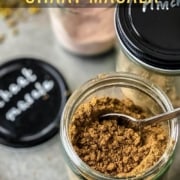Tangy, spicy, and salty, chaat masala is the magical spice mix that makes Indian street food irresistible. Add a tiny sprinkle of this powder to fruits, salads, and snacks for that extra burst of flavor. And the perfect part? You’ll be able to easily make your personal chaat masala in under quarter-hour with this easy-to-follow recipe.
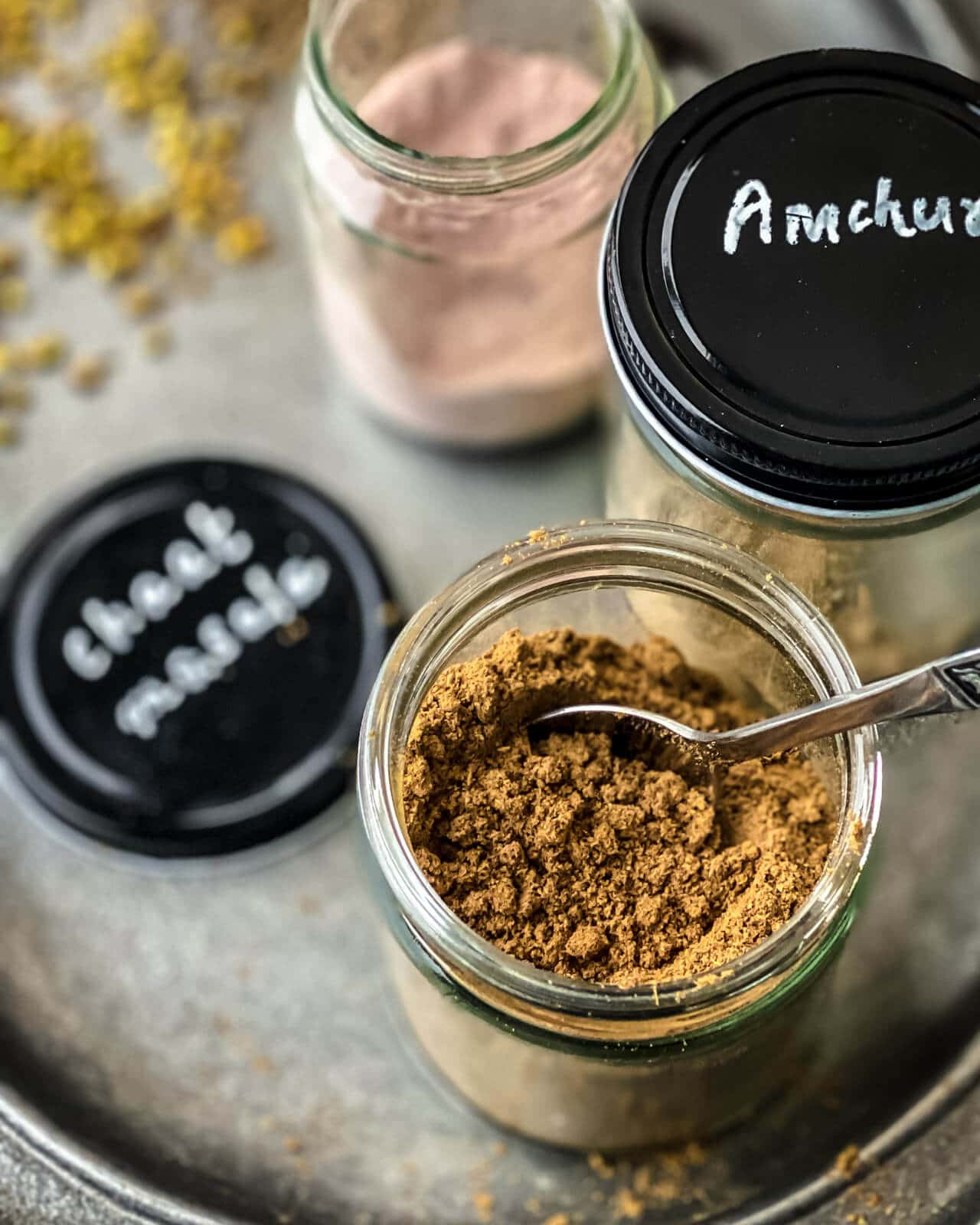
The connection between chaat and chaat masala
For an Indian street food enthusiast like myself, the mere mention of the word “chaat” is sufficient to make the taste buds tingle with anticipation. Chaat, sometimes called chat, refers to a mouthwatering array of savory delights served at roadside stalls across India.
These delectable offerings include a wide range of dishes. Picture crunchy and savory snacks like bhelpuri, sev puri, pani puri, and samosas—each a flavor-packed masterpiece in its own right. What elevates these mouth-watering snacks to culinary perfection is the pairing with spicy green cilantro chutney and tangy-sweet tamarind chutney.
But there’s another element that takes these dishes from delicious to divine—chaat masala. This zesty spice mix, primarily composed of three key ingredients: black peppercorns, black salt, and dry mango powder (often known as kala namak and amchur powder in Hindi, respectively), is the key behind the irresistible allure of chaat.
The mix of tanginess from the mango powder, heat from the black pepper, and the umami flavor of black salt create a flavor explosion that makes chaat not only addictive but additionally incredibly popular.
What does chaat masala taste like?
Chaat masala is a particular Indian spice mix known for its tangy, salty taste with a subtle hint of warmth.
What’s chaat masala fabricated from?
Chaat masala typically consists of three key ingredients: dry mango powder, black salt, and black peppercorns.
Dry mango powder (Amchur or Amchoor powder): The element liable for the masala’s signature tanginess.
Black salt: The key star of chaat masala, black salt, also often known as Himalayan or pink salt, comprises sulfur compounds that contribute to the umami flavor.
Black peppercorns: Introducing a subtle touch of warmth, black peppercorns contribute to the masala’s well-rounded flavor.
Together with those 3 key ingredients, there are a couple of others that play a task in crafting this flavorful mixture:
- Cumin seeds – Infuse warmth and earthiness, complementing the tangy and savory notes.
- Whole coriander seeds – Add fresh, citrusy flair, enhancing overall flavor.
- Carom seeds (ajwain) – Bring a touch of thyme-like fragrance, adding depth to the masala’s complexity.
- Dried ginger powder – Adds citrus and peppery notes to this spice mix.
- Dried mint leaves – Contribute a refreshing, cooling element, balancing spice and tang.
- Asafoetida – known for its distinct aroma and savory taste.
Note: You’ll be able to easily find all these ingredients in Indian grocery stores or Indian supermarkets worldwide.
How one can make chaat masala
Creating your personal chaat masala is a simple process. Here’s a step-by-step guide:
- Dry Roasting: Begin by dry roasting cumin seeds, coriander seeds, and peppercorns. Heat them over medium heat for about one to 2 minutes, until they turn fragrant.
- Cooling: It’s essential to let the roasted spice mixture cool down. Grinding spices after they are hot can release moisture, affecting the shelf-life of the spice mix.
- Grinding: Once the mixture has cooled, grind it with the remaining ingredients. This includes dry mango powder (amchur), black salt, carom seeds (ajwain), dried ginger powder, dried mint leaves, and asafoetida. Grind it to a tremendous powder. Transfer it into an airtight container and store it away from direct sunlight.
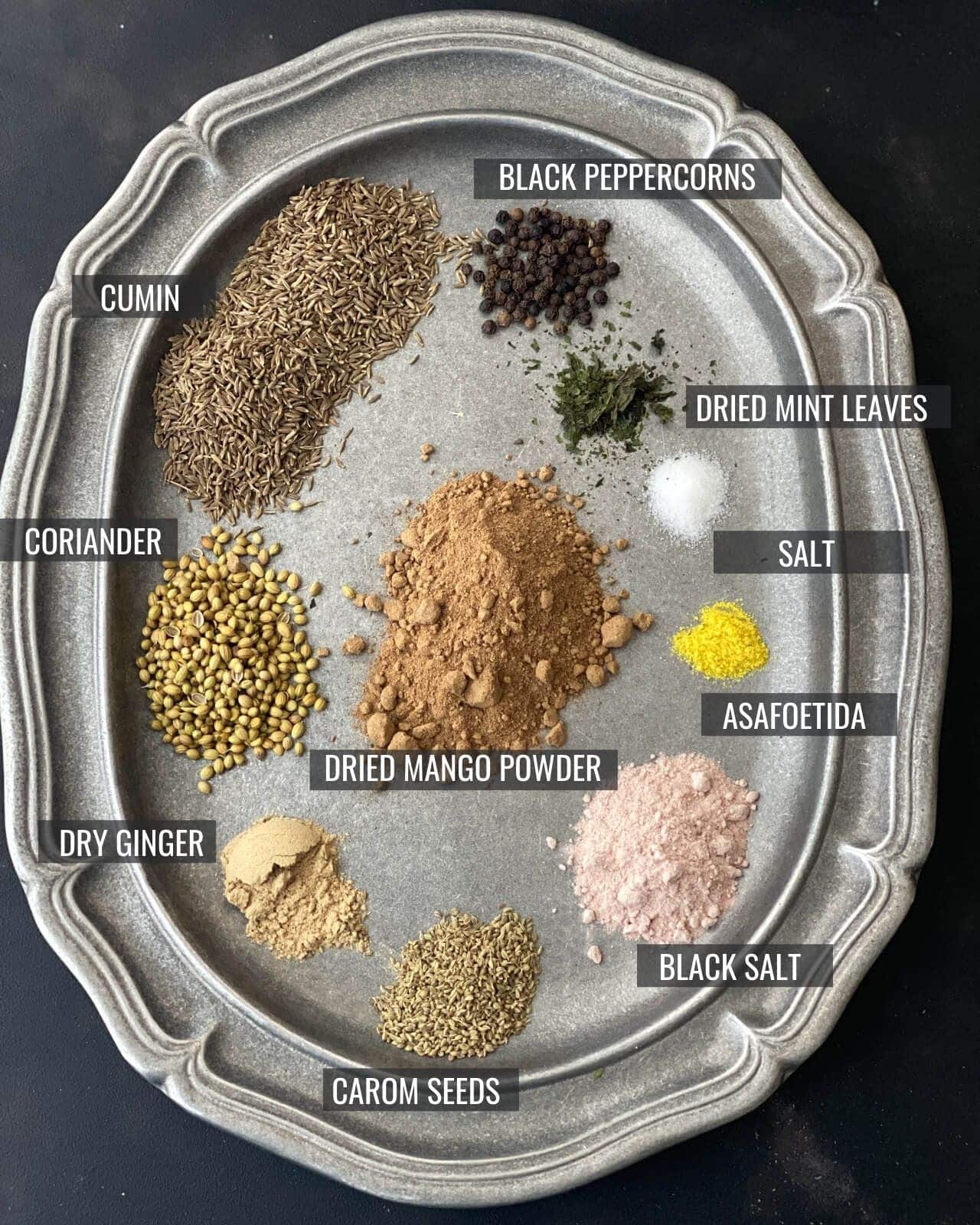
Storage instructions
Store chaat masala in an air-tight container in a cool, dark, and dry place away from direct sunlight. It preserves well for 3-4 months – after this era, it should begin to lose its flavor and aroma.
What’s the difference between chaat masala and garam masala?
Chaat masala and garam masala are two Indian spice blends that usually share shelf space within the Indian kitchen, but couldn’t be more different in flavor and use. Let’s dive into the distinctions between these fragrant mixes to demystify their uniqueness.
- Ingredients – Essentially the most significant difference between the 2 lies within the inclusion of black salt. Chaat masala features black salt as an important ingredient, whereas garam masala rarely incorporates it. This black salt imparts a definite sulfurous aroma and taste to chaat masala.
- Timing – Chaat masala is often sprinkled on cooked food to reinforce its taste and flavor. In contrast, garam masala is added throughout the cooking process, allowing its flavors to infuse the dish because it cooks.
- Flavor profile – Chaat masala is tangy, because of the dry mango powder. It also prominently features flavors like cumin, coriander, and asafoetida (hing). Then again, garam masala skips dry mango powder and asafoetida. As an alternative, it comprises fragrant spices and herbs similar to black cardamom, green cardamom, cinnamon, cloves, and more, lending this popular Indian spice mix a more intense and heady flavor distinct from chaat masala.
- Salt – One other noteworthy distinction is that chaat masala often comprises added salt, while garam masala doesn’t.
What are you able to substitute for chaat masala?
While some may suggest garam masala as an alternative choice to chaat masala, it could not quite hit the mark on account of its lack of tanginess. Here’s a fast workaround for recreating the flavors in a pinch: Mix mango powder and black salt in a 2:1 ratio. This mix will capture the essence of chaat masala’s tangy and umami notes. To introduce some heat, incorporate either chili powder or pepper powder to taste.
Note: When you’re out of mango powder, citric acid powder is a superb substitute. Just note that without black salt, replicating the unique sulfurous aroma of chaat masala could also be a challenge.
Is chaat masala unhealthy?
Chaat masala by itself shouldn’t be considered unhealthy. The spices utilized in this mix offer various health advantages. Here’s a breakdown of why chaat masala could be helpful:
- Digestive Advantages: Chaat masala often comprises ginger, black peppercorns, black salt, and coriander, all of which may support your digestive system. They might help reduce flatulence and bloating, making it easier to your body to process food.
- Minerals and Vitamins: Ingredients like cumin and mango powder in chaat masala are good sources of essential minerals and vitamins. Cumin, for instance, is wealthy in iron and will help improve iron absorption within the body—source: Healthline.
- Antioxidants: Some components of chaat masala, like coriander, contain antioxidants that may help combat free radicals in your body, potentially reducing the chance of chronic diseases.
It’s vital to notice that the health advantages of chaat masala rely upon its usage and pairing. Chaat dishes often feature deep-fried snacks, which, if overconsumed, could be unhealthy on account of their high calorie and fat content. Having fun with chaat sparsely is vital, but chaat masala, with its helpful spices, can enhance your dishes when used properly.
How one can use chaat masala? What’s chaat masala used for?
Chaat masala is a flexible spice mix that could be utilized in various ways to reinforce the flavour of your dishes. It’s primarily often known as a ending spice, but it may possibly even be incorporated into marinades for some appetizers. Listed here are some common methods of using chaat masala in Indian dishes:
- Ending spice: Sprinkle chaat masala on top of finished dishes just before serving. This adds a burst of tangy and spicy flavor to the dish. It’s commonly used on street foods like papdi chaat, dahi vadas, aloo tikki, etc.
- Marinades: For appetizers like tandoori chicken, seekh kababs, or paneer tikka, you may incorporate chaat masala into the marinade. It infuses the protein with a touch of spice and tang because it marinates, giving a pleasant twist to the ultimate dish.
- Yogurt-based dishes: Stir chaat masala into yogurt-based raitas to raise their taste.
- Sprinkled over fries: Whether it’s homemade potato fries or sweet potato fries, a sprinkle of chaat masala can take them to the following level.
- Fruit chaat: Try it on cut fruits like watermelon, apples, or pineapple for an unexpected tangy kick.
- Potatoes: Whether roasted, mashed, or fried, chaat masala complements the earthy taste of potatoes.
- Grilled meats and vegetables: Use chaat masala as a seasoning for grilled meats, seafood, or vegetables to infuse them with its distinctive flavors.
- Snacks: Sprinkle chaat masala on snacks like popcorn, roasted nuts, or chickpeas for a novel and flavorful snack experience.
Remember, chaat masala is potent, so somewhat goes a good distance. Start with a small amount and adjust to your taste preferences. It’s a improbable solution to add a novel Indian twist to a big selection of dishes!
Recipes using chaat masala
Listed here are a few of the recipes from Indian cuisine that use chaat masala powder as a flavor enhancer –
- Corn bhel – Do that non-traditional way of constructing corn bhel or corn chaat, and also you’ll be hooked. While most Indian street food demands a compulsory drizzling of tamarind chutney and green chutney, this no-fuss corn bhel recipe doesn’t require either.
- Grilled Veggie Sandwich – You’ll fall in love with this Bombay sandwich – bread slathered with butter and green chutney, layered with veggies, after which grilled to perfection. Learn tips on how to make this sought-after Indian street food at home.
- Tandoori Chicken – This quick and simple Tandoori chicken recipe makes essentially the most flavorful and authentic chicken that’s crisp on the skin and succulent on the within – identical to it’s speculated to be!
- Boondi raita – This delicious boondi raita is made by soaking crispy chickpea flour balls in creamy spice-infused yogurt. Serve it with biryanis or with rotis and a side dish – it’s the proper solution to wrap up your meal.
- Phool Makhana – Roasted phool makhana or fox nuts is an addictive treat that is ideal for movie nights or at any time when hunger strikes. A healthy alternative to chips, this crispy and light-weight snack comprised of puffed lily seeds is prepared in 10 minutes.
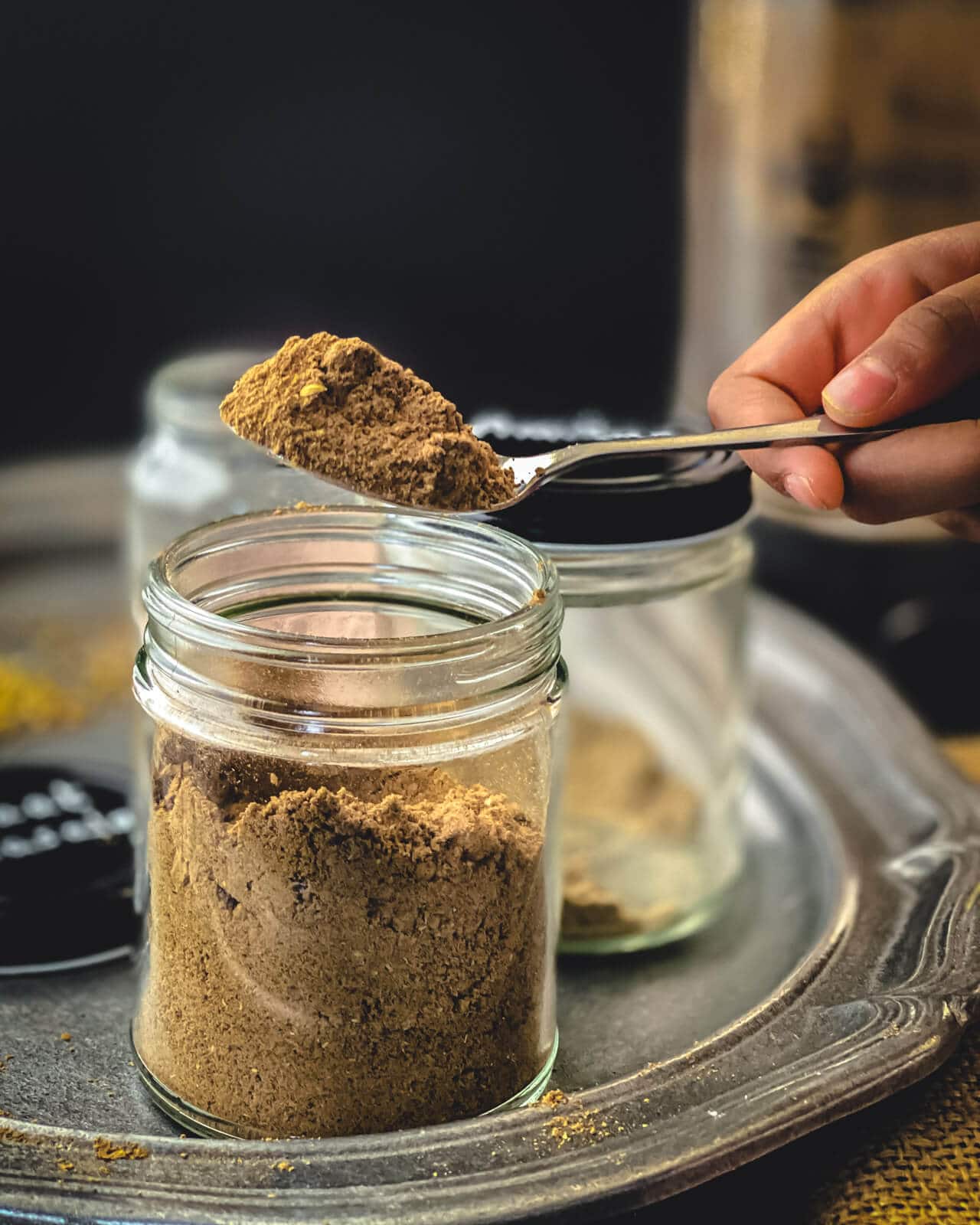
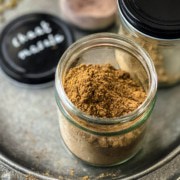
Click on the celebs to rate!
Authentic Chaat Masala Powder Recipe
Chaat masala is a signature spice mix that makes Indian street food irresistible. Make at home in under quarter-hour with this easy recipe.
Pin
Print
Save
Email
Prevent your screen from going dark
-
Add cumin seeds, coriander seeds and peppercorns to a cast-iron skillet kept over medium heat.
-
Roast the ingredients for 1-2 minutes until toasted and fragrant.
-
Transfer to a plate and let it cool for about 10 minutes.
-
Add the cooled spices together with the remaining ingredients to a blender.
-
Mix to a tremendous powder.
-
Store in an air-tight container in a cool, dry place for about 3-4 months.
When you don’t have dried mint leaves, you may easily make some at home from fresh leaves. Just saute them on medium heat for 5-6 minutes to dehydrate them.
Disclaimer: Approximate dietary information is provided as a courtesy and might vary depending on the precise ingredients/brands used. If you might have health issues, please work with a registered dietician or nutritionist.
Serving: 1tablespoonCalories: 32kcalCarbohydrates: 6gProtein: 1gFat: 1gSaturated Fat: 1gSodium: 1821mgPotassium: 55mgFiber: 1gSugar: 1gVitamin A: 29IUVitamin C: 1mgCalcium: 28mgIron: 2mg
Weight loss program: Gluten-free, Vegan, Vegetarian
Course: Basics
Method: Blender, Stovetop
Cuisine: Indian
This recipe was originally published on 8/18/2020, and the text and pictures were updated on Oct 29, 2023.


